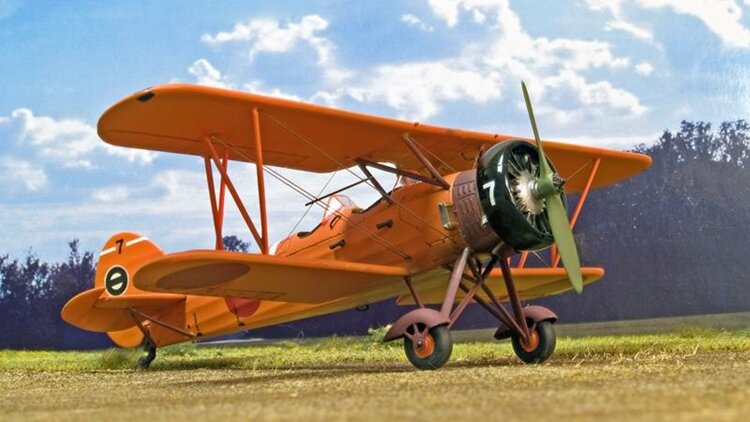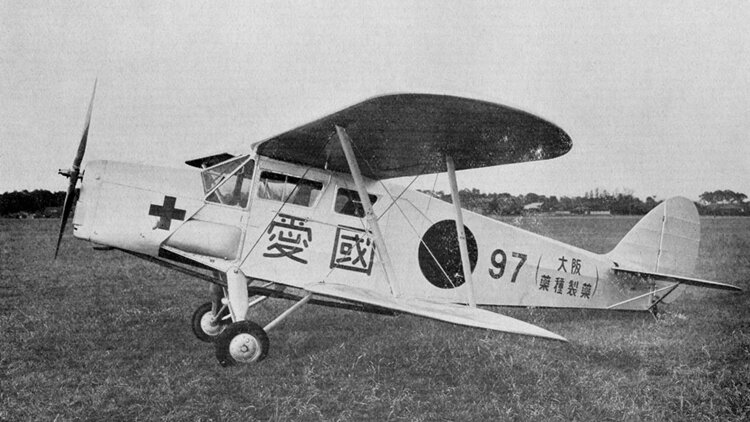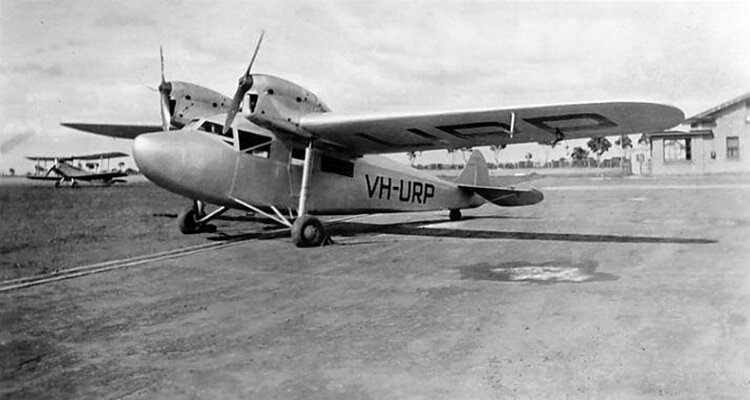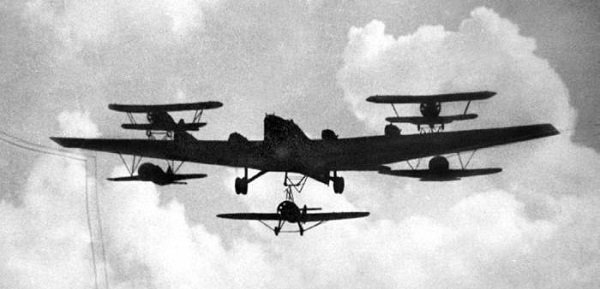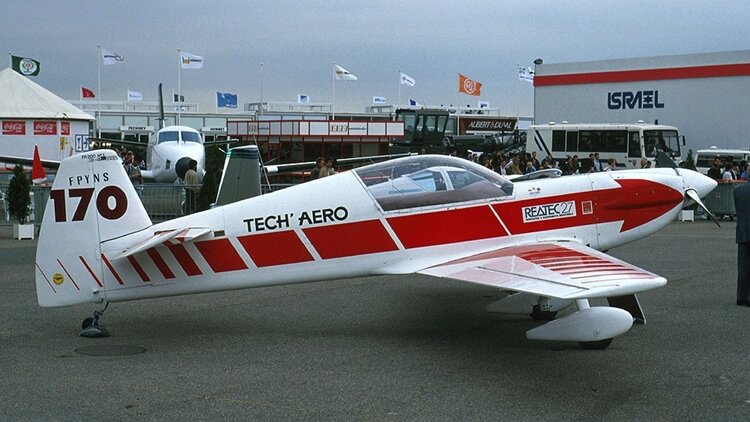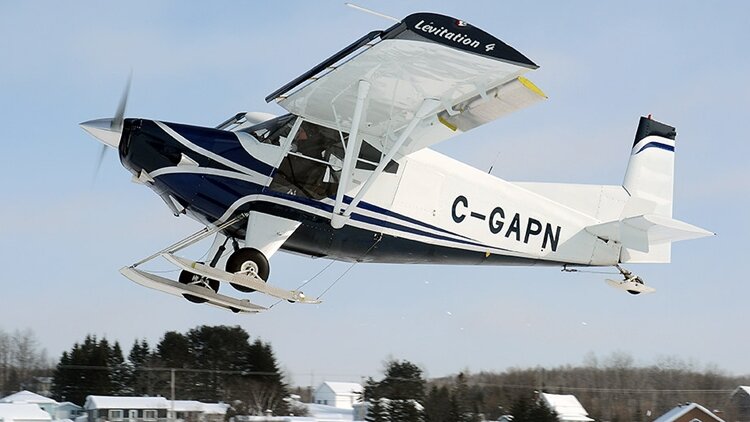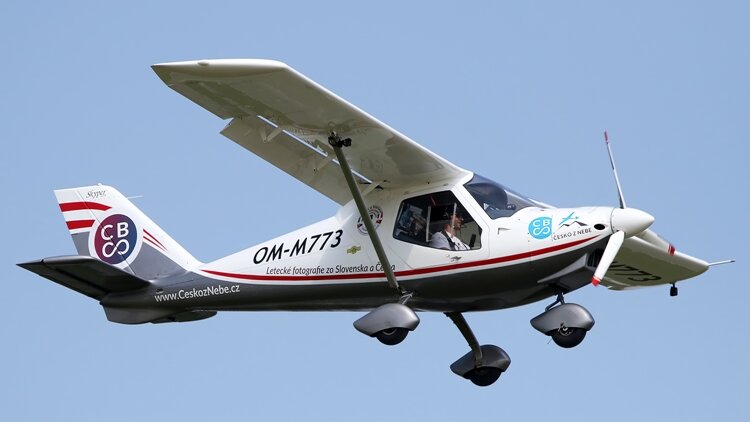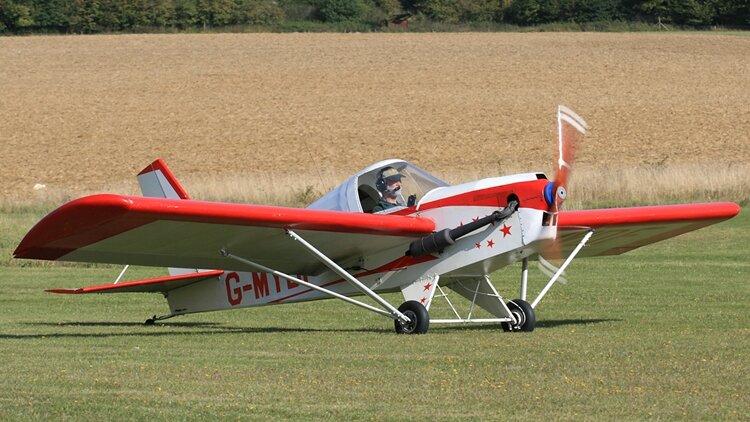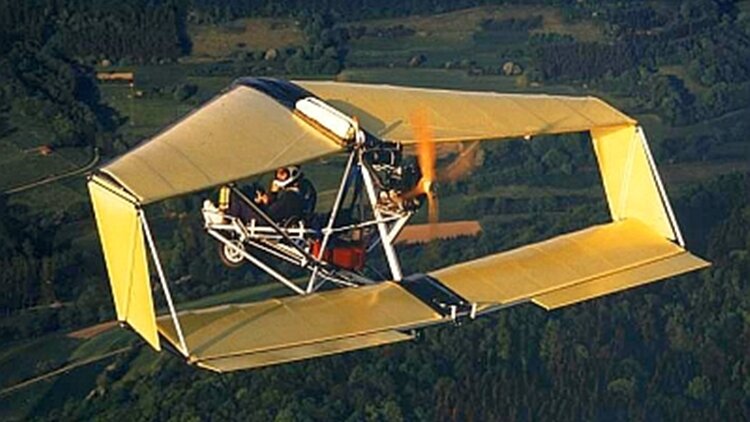-
Posts
7,820 -
Joined
-
Last visited
-
Days Won
68
Content Type
Profiles
Forums
Gallery
Downloads
Blogs
Events
Store
Aircraft
Resources
Tutorials
Articles
Classifieds
Movies
Books
Community Map
Quizzes
Videos Directory
Everything posted by red750
-
Antonov An-22 carrying a wing section of an An-124 on top of fuselage.
-
-
- 4
-

-

-
A pilot and his passenger have miraculously escaped serious injury after a light plane crashed onto a golf course in Sydney’s north. The plane narrowly avoided golfers as it landed in the middle of the green at Mona Vale golf course about 2.20pm on Sunday. Multiple bystanders rushed over to help, with two men in their 50s walking away from the crash suffering only minor injuries. It’s believed the pair were on a training flight from Camden to Wollongong that took off about 1.30pm. The men were loaded into a golf cart and taken to Royal North Shore Hospital in stable conditions. The Australian Transport Safety Bureau has been notified of the incident. Plane crash Sydney golf course.mp4
-

Outlanding Nyngan - 24 January 2025
red750 replied to red750's topic in Aircraft Incidents and Accidents
ATSB report published 15/8/25. -
https://www.msn.com/en-au/news/other/australia-s-ca-23-the-fighter-jet-that-could-have-ruled-the-skies/vi-AA1KqXF1?ocid=winp2fptaskbar&cvid=40ba57da14f54f2daa208c02017dc118&ei=101 Sorry about the other rubbish, I can't delete it.
-
- 1
-

-

New electric developments
red750 replied to Kyle Communications's topic in AUS/NZ General Discussion
On Facebook today. Electra’s hybrid-electric aircraft is turning heads in the aviation world—not with flashy designs, but with its quiet performance and impressive flexibility. Capable of lifting off at just 35 mph and needing less runway than a soccer field, this short takeoff and landing (STOL) aircraft combines the practicality of traditional planes with some of the access advantages of vertical takeoff designs. While eVTOLs have dominated headlines, Electra has quietly racked up over $9 billion in pre-orders for its eSTOL aircraft—outpacing even the most hyped electric air taxis. The secret? A conventional fixed-wing design with eight electric propellers along the wing and “blown lift” tech that allows incredibly short takeoffs and landings. And it’s quiet, too—flying overhead at 500 ft, it produces just 55 decibels, about as loud as a normal conversation. Still in testing, Electra’s EL2 prototype has already shown promising results, with takeoffs in under 150 feet and airspeeds as low as 25 mph. A full-scale, nine-seat demonstrator is scheduled to fly in 2026, with certification expected by 2028. For operators seeking versatility without the complexity of eVTOLs, Electra’s offering is becoming hard to ignore. -
The Tupolev Tu-91 (NATO reporting name Boot) was a two-seat Soviet attack aircraft built during the 1950s. It was initially designed as a carrier-borne aircraft, but was converted into a land-based aircraft after Joseph Stalin's death in 1953 cancelled the aircraft carriers being designed. Two prototypes had been built and production had been approved by the Soviet Navy when it was inspected by the General Secretary, Nikita Khrushchev, in 1956. He remarked how ridiculous the Tu-91 looked and the program was cancelled. Kuznetsov had ordered preliminary design work to begin on the Project 85 light aircraft carrier and the aircraft for the ship before Stalin's death, although the ship was never more than a paper design. This allowed the Tupolev Design bureau to decide upon on a single-engined turboprop aircraft to meet Soviet Naval Aviation's requirement for a long-range strike aircraft, capable of attacking targets with bombs or torpedoes. The new leaders of the Soviet Union rejected proposals for carriers and the Council of Ministers issued a requirement for a land-based bomber powered by a Kuznetsov TV-2 turboprop engine that was capable of level and dive bombing attacks on targets with bombs, torpedoes, rockets, gunfire and naval mines, in addition to coastal reconnaissance missions, on 29 April 1953. This forced the bureau to revise the design to eliminate the wing-folding mechanism, arresting gear and other carrier-specific equipment for the second prototype. The Tu-91 first flew on 17 May 1955, when the manufacturer's flight testing began. They concluded successfully about September with the test pilots concluding that the aircraft was highly manoeuverable, although barrel rolls should be forbidden. The aircraft also passed the subsequent state testing and the design bureau began preparing for production at Factory No. 31, in Tbilisi, Georgia. The Tu-91 was part of a display of the latest military aircraft for the Soviet leadership in mid-1956, one of the very few propeller-driven aircraft present. When the newly elected Khrushchev inquired about the aircraft, the officer detailed to the aircraft misspoke, stating that it could do the job of a heavy cruiser rather than it had the firepower of that ship. Khrushchev replied, "But nobody needs heavy cruisers any more", and commented how ridiculous it looked. This off-hand comment caused the program to be cancelled. Only 2 had been built. Video here.
-
The Tachikawa Ki-9 (九五式一型練習機, Kyūgo-shiki ichigata renshuki) was an intermediate training aircraft of the Imperial Japanese Army Air Force built by Tachikawa Aircraft Company Ltd in the 1930s. It was known to the Allies under the nickname of "Spruce" during World War II. This aircraft was mistakenly identified as a Tatchikawa by the British. The Ki-9 was a two-seat, unequal wingspan biplane design. Tachikawa originally planned to use the same basic airframe for both basic training and intermediate training, differentiating the two models by the use of different engines. The prototype Ki-9 flew on 7 January 1935, powered by a 261 kW (350 hp) nine-cylinder Hitachi Ha-13a radial engine. The second prototype was identical, and the third prototype was powered by a 112 hp (80 kW) Nakajima NZ seven-cylinder radial engine. The third prototype exhibited stability problems due to a center of gravity issue, and, as a result, the primary trainer model was abandoned and the Ki-9 was developed only for the intermediate trainer. Tachikawa subsequently developed the Ki-17 for the primary trainer role. The first production aircraft were delivered in 1935. The Ki-9 was introduced to service as the Army Type 95-1 Medium Grade Trainer Model A under the former aircraft naming nomenclature system. The first version had a complex, split-axle landing gear with fairings over the top of the wheels. In 1939, this was modified and simplified, the fuselage slightly shortened, and the total weight reduced. The resulting Army Type 95-1 Model B or Ki-9-kai had improved maneuverability and flight characteristics. This version was quickly superseded by the Army Type 95-1 Model C, or Ki-9-otsu, in full production. Both versions were used widely for blind-flying training with a folding hood over the rear cockpit, and several were modified with a glazed canopy over the rear cockpit for use as a staff officer transport plane. Some were pressed into service for use as "special attack" (kamikaze in American terminology) aircraft in the closing days of the war, fitted with either a 100 kg anti-ship bomb, an oil drum filled with explosives, or fuel in the rear cockpit. Production by Tachikawa totaled 2,395 aircraft, ending in 1942. At least another 220 Ki-9s were constructed by Tokyo Gasu Denki (also known as Gasuden) from 1943 to 1945. The Ki-9 was also flown in wartime by Japanese satellite countries and postwar by the fledgling government of Indonesia and captured units by the Republic of China. Variants Ki-9 (Army Type 95-1 Medium Grade Trainer Model A): Initial version two-seat intermediate trainer aircraft. Ki-9-ko (Army Type 95-1 Medium Grade Trainer Model B): Improved version. Ki-9-otsu (Army Type 95-1 Medium Grade Trainer Model C): Standard production version.
-
The Tachikawa KKY, full name Tachikawa Army Small and Light Ambulance Aircraft, was designed to rescue injured or sick patients from places without established airfields. Following two earlier prototypes, twenty-one production examples were built between 1936 and 1940 and served in the Second Sino-Japanese War. In August 1932, the Japanese Army placed an order for a small ambulance aircraft, capable of using rough airstrips and holding two stretcher cases and a medical attendant, with what was then the Aeroplane Factory of Ishikawajima Shipbuilding Company. Though the prototype was completed in December 1933, its development was protracted, and it was not ready for production until 1936. By then, the Ishikawajima Company had become the Tachikawa Aeroplane Co. It was a single bay cabin biplane with wings attached to the upper and lower longerons and braced on each side with near-parallel interplane struts. The wings had wooden structures and were fabric-covered. The KKY was powered by a 120–130 hp (89–97 kW) Cirrus Hermes IV four cylinder air-cooled, inverted inline engine and the later KKY-2 by a 150 hp (110 kW) Gasuden Jimpu seven cylinder radial engine. The fuselage had a welded steel tube structure, flat-sided behind the engine, with a windowed cabin that included the pilot's seat just ahead of the wing leading edge with the patients and attendant under the wing. The tail, with an aluminium structure and fabric-covered, was conventional with a tailplane on top of the fuselage and braced to it from below. The vertical tail had a strongly-blunted triangular profile. As its purpose was to rescue patients from rough airfields or unmade airstrips, the ambulance needed a robust undercarriage. This had split axles mounted on a short, central, V-strut from the fuselage underside. Both short, faired shock absorber legs and their rearward drag struts were mounted on the lower fuselage longerons. Wheels with wide, low-pressure tires were available for missions to unmade strips. Twenty-one Aikoku-go (privately funded) production KKYs were built between 1936 and 1940. They were active in the Second Sino-Japanese War, which began in 1937 and became part of World War II, when China entered on the Allies' side shortly after the attack on Pearl Harbor.
-
You got it, onetrack.
-
The Tugan LJW7 Gannet, also known later as the Wackett Gannet after its designer Lawrence Wackett, was a small twin-engined airliner built by Tugan Aircraft in Australia in the 1930s. It was the first Australian-designed aircraft to enter series production. It was also the first Australian-designed and built aircraft to be taken on strength (put into operational service) by the Royal Australian Air Force. The Gannet was a strut-braced, high-wing monoplane of conventional design, with twin engines mounted in nacelles on the wings. The undercarriage was of fixed, tailwheel configuration with divided main units. The wings were of wooden construction, skinned in plywood, and the fuselage was built from welded steel covered in fabric. The prototype Gannet underwent flight testing in October 1935, and was destroyed in a crash shortly thereafter. The pilot and passengers perished in the ensuing fire, but despite this, the Gannet entered series production. The type was operated by Butler Air Transport between Sydney and Broken Hill and at least one flew with Ansett Airways in 1943. RAAF Gannets saw service as survey aircraft between 1935 and 1942 when they were converted into air ambulances for the newly-formed No.2 Air Ambulance Unit. The last RAAF Gannets were scrapped in 1946. Total number built: 8. Operators Ansett Airways Butler Air Transport Royal Australian Air Force Western and Southern Provincial Airlines
-
-
The Tech Aero TR 200 is a French homebuilt aerobatic aircraft that was designed and produced by Tech Aero of Glisolles, first flown in August 1988. When it was available, the aircraft was supplied as a kit for amateur construction. Designed as a trainer for the unlimited class, the TR 200 features a cantilever low-wing, a two-seats-in-tandem enclosed cockpit under a bubble canopy, fixed conventional landing gear with wheel pants and a single engine in tractor configuration. The aircraft is made from wood. Its 7.42 m (24.3 ft) span wing has a wing area of 10.0 m2 (108 sq ft). The cabin width is 71 cm (28 in). The acceptable power range is 200 to 260 hp (149 to 194 kW) and the standard engine used is the 200 hp (149 kW) Lycoming AEIO-360 powerplant. The TR 200 has a typical empty weight of 570 kg (1,260 lb) and a gross weight of 870 kg (1,920 lb), giving a useful load of 300 kg (660 lb). With full fuel of 160 litres (35 imp gal; 42 US gal) the payload for pilot, passenger and baggage is 186 kg (410 lb). The standard day, sea level, no wind, take off with a 200 hp (149 kW) engine is 400 m (1,312 ft) and the landing roll is 450 m (1,476 ft). The manufacturer estimated the construction time from the supplied kit as 800 hours.
-
The Tapanee Levitation 4 is a Canadian four-seat STOL aircraft designed to be homebuilt by Michel Lequin for Tapanee Aviation of Mont-Saint-Michel, Quebec. A larger version of the companies earlier Pegazair bushplane, the Levitation is a high-wing monoplane with V-strut bracing, leading edge slats and Junkers flaperons. Powered by a 180 hp (134 kW) Lycoming O-360 flat-six piston engine with a two-blade propeller. The Levitation has a fixed conventional landing gear with a tailwheel and a cabin holding a pilot and three passengers in two rows of side-by-side seating. By December 2004 five kits had been sold.
-
The Tomark Skyper GT9 is a Slovakian ultralight and light-sport aircraft, designed and produced by Tomark of Prešov, introduced in 2014. The aircraft is supplied complete and ready-to-fly. The Skyper GT9 was designed to comply with the Fédération Aéronautique Internationale microlight rules and US light-sport aircraft rules and complies with the Czech UL2-1 and ELSA as well as German LTF-UL rules. It was designed for the flight training and touring roles. It features a strut-braced high-wing, an enclosed cabin with two-seats-in-side-by-side configuration accessed by doors, fixed tricycle landing gear and a single engine in tractor configuration. The aircraft is made from aluminum sheet and has a round fuselage profile. Its 9.0 m (29.5 ft) span wing has an area of 10 m2 (110 sq ft) and mounts flaps. Standard engines available are the 100 hp (75 kW) Rotax 912ULS and 912iS four-stroke powerplants. The design is offered in a European UL version with a 472.5 kg (1,042 lb) gross weight and a US LSA version with a gross weight of 600 kg (1,300 lb). As of March 2017, the design does not appear on the Federal Aviation Administration's list of approved special light-sport aircraft. Reviewer Marino Boric described the design in a 2015 review as "ideal for cross country travel".
-
The Team Mini-MAX is a large family of single-seat, mid-wing, strut-braced, single engine aircraft, available in kit form for amateur construction. The first Mini-MAX had its first flight in 1984. Its name indicates its original design goals: a minimum-cost aircraft that requires a minimum of building space, time and skill, but which provides a maximum of enjoyment and performance. The Mini-MAX family was originally produced by TEAM Incorporated of Bradyville, Tennessee. After that company was bankrupted by a lawsuit, production passed to Ison Aircraft also of Bradyville, Tennessee and next to JDT Mini-MAX of Nappanee, Indiana. The company was renamed Team Mini-Max LLC in 2012, with production in Niles, Michigan. The Mini-MAX models are all predominantly constructed from wood truss with plywood gussets and covered with doped aircraft fabric. The construction time to complete a Mini-MAX varies depending on the model chosen. Many models feature open cockpits equipped with windshields. All versions feature a short-span wing of only 25 ft (7.6 m), except the V-MAX and 1600R EROS, which have a 26.5 ft (8.1 m) wingspan. The wing and horizontal stabilizer are both strut-braced: the wing is braced to the landing gear and the tail is braced from the horizontal tail surface to the fin. All models have conventional landing gear, with wheel pants as an option. Since the wing is braced to the mainwheels and the mainwheels are connected by a rigid axle, the pneumatic tires provide the only suspension. The aircraft was originally intended to meet the requirements of the US FAR 103 Ultralight Vehicles category, including that category's maximum 254 lb (115 kg) empty weight. The original ultralight models of the Mini-MAX were equipped with the 28 hp (21 kW) Rotax 277 engine to achieve acceptable empty weights. Today the 1030F MAX 103 and 1100F Mini-MAX achieve an acceptable FAR 103 empty weight if they are equipped with the 28 hp (21 kW) Hirth F-33 powerplant. Other models use heavier engines which place them in the US Experimental - Amateur-built category. Variants 1030F MAX-103 Single seat, open cockpit, mid-wing aircraft with the 28 hp (21 kW) Hirth F-33 engine. Still in production. Manufacturer claimed construction time 300-350 hours. 1030R MAX-103 Single seat, open cockpit, mid-wing aircraft with the 28 hp (21 kW) Rotax 277. First flight 1993, out of production, replaced by the 1030F. Manufacturer claimed construction time 350 hours. 250 completed and flown by 2011. 1100F Mini-MAX Single seat, open cockpit, mid-wing aircraft with the 28 hp (21 kW) Hirth F-33 engine. Still in production. Manufacturer claimed construction time 250-300 hours. 1100R Mini-MAX Single seat, open cockpit, mid-wing aircraft with the 40 hp (30 kW) Rotax 447 engine. First flight 1984, still in production. Manufacturer claimed construction time 250-300 hours. 600 completed and flown by 2011. 1200Z Z-MAX Single seat, open cockpit, mid-wing aircraft with the 45 hp (34 kW) Zenoah G-50 engine. First flight 1991, out of production. Manufacturer claimed construction time 350 hours. 124 completed and flown by 2001. As this is a US aircraft the name is pronounced "Zee-Max". 1300Z Z-MAX Single seat, enclosed cockpit, mid-wing aircraft with the 45 hp (34 kW) Zenoah G-50 engine. First flight 1990, out of production. Manufacturer claimed construction time 400 hours. 231 completed and flown by 2001. As this is a US aircraft the name is pronounced "Zee-Max". 1500R Sport Single seat, open cockpit, mid-wing aircraft with the 40 hp (30 kW) Rotax 447 engine. First flight 1987, still in production. Manufacturer claimed construction time 300-350 hours. 200 completed and flown by 2011. 1550V V-MAX Single seat, open cockpit, mid-wing aircraft with the 50 hp (37 kW) Volkswagen air-cooled engine and 26.5 ft (8.1 m) wingspan. First flight 1993, still in production. Manufacturer claimed construction time 325-400 hours. 250 completed and flown by 2011. 1600R Sport Single seat, enclosed cockpit, mid-wing aircraft with the 40 hp (30 kW) Rotax 447. First flight 1989, still in production. Manufacturer claimed construction time 325-400 hours. 315 completed and flown by 2011. 1650R EROS (Specifications below) Single seat, enclosed cockpit, mid-wing aircraft with the 50 hp (37 kW) Rotax 503 and 26.5 ft (8.1 m) wingspan. Still in production. Manufacturer claimed construction time 325-400 hours. 300 completed and flown by 2011.
-
The Airkraft Sunny is an ultralight aircraft that was designed by Dieter Schulz. The aircraft was initially produced by his company, Tandem Aircraft KG of Saulgau, Germany, which built about 150 examples between 1989 and 1999. After he sold the rights in 1999, it was then produced by Dewald Leichtflugzeugbau Gmbh of Bad Schönborn, Germany and more recently by Airkraft Gmbh Leichtflugzeugbau of Beringen, Switzerland, who seem to have gone out of business in about 2010 and production ended. Originally supplied ready-to-fly, later the aircraft was supplied as a kit for amateur construction or as a complete ready-to-fly-aircraft. The aircraft complies with the Fédération Aéronautique Internationale microlight category rules. It features an unusual diamond-shaped biplane, strut-braced closed wing layout, a two-seats-in-tandem enclosed or open cockpit, fixed tricycle landing gear and a single engine in pusher configuration. The upper wing is swept back, while the lower wing is straight, but mounted further aft. The two wings are joined by swept tip rudders. The elevons are mounted to the lower wing only. The aircraft is made from bolted-together aluminium tubing, with its flying surfaces covered in Dacron sailcloth. Standard engines available include many models of Hirth, Rotax, BMW and Verner 133M powerplants, ranging from 65 to 80 hp (48 to 60 kW). Variants Sunny Light (Specifications below) Version with open cockpit Sunny Sport Two seat tandem version with enclosed or semi-enclosed cockpit Sunny Side-By-Side Version with side-by-side configuration seats Sunny Targa Fully enclosed version. Sunny Amphibian Version with amphibious floats
-

Bass Strait plane missing 02/08/25
red750 replied to BurnieM's topic in Aircraft Incidents and Accidents
Three nulti-posts deleted. -
https://www.abc.net.au/news/2025-07-31/g-for-george-aircraft-lancaster-bomber-war-memorial/105597316
- 1 reply
-
- 2
-

-

-
A Brisbane man has died in a glider crash in Queensland's Darling Downs region, the second fatal aviation crash for the region in the past two weeks. https://www.msn.com/en-au/news/australia/pilot-dies-in-second-aviation-crash-on-the-darling-downs-within-two-weeks/ar-AA1JBFUi?ocid=winp2fptaskbar&cvid=45600f8864fe42f5a1acc54d890e213d&ei=60
-
- 2
-

-








